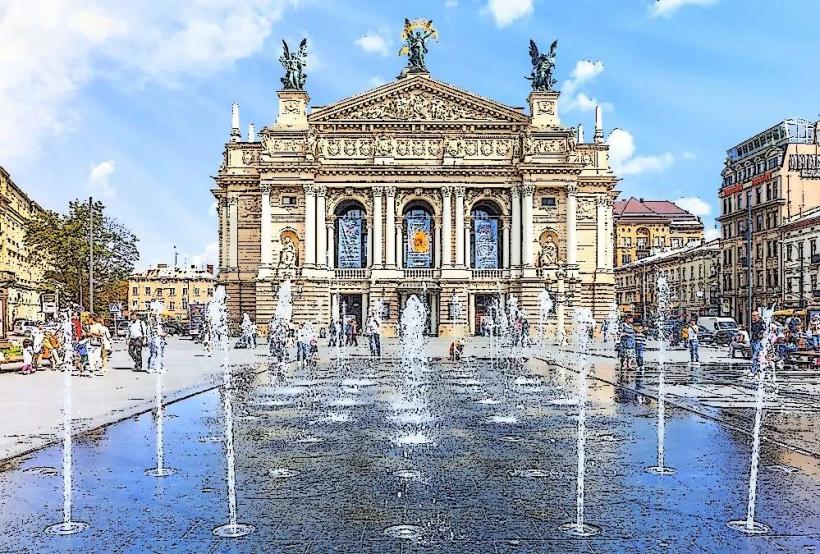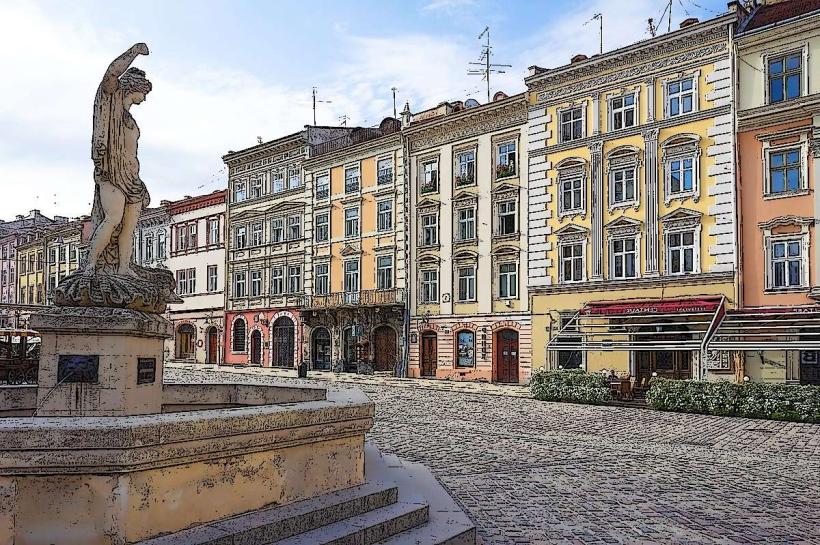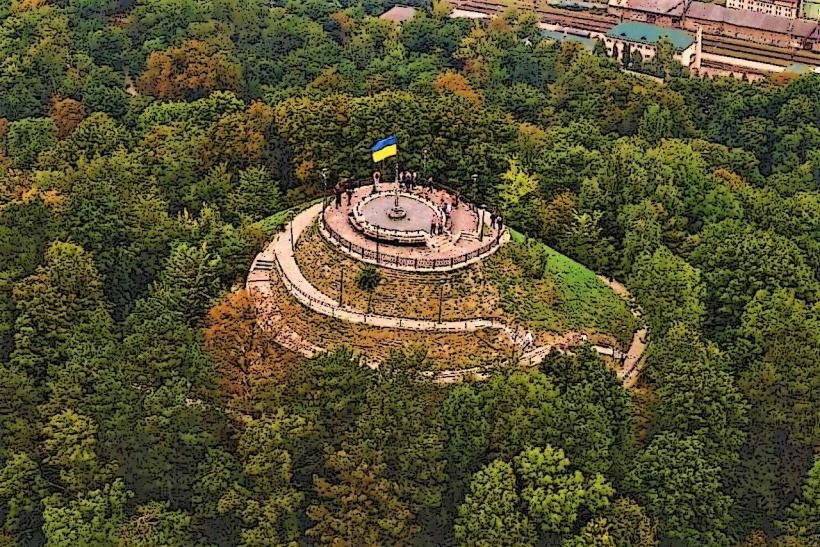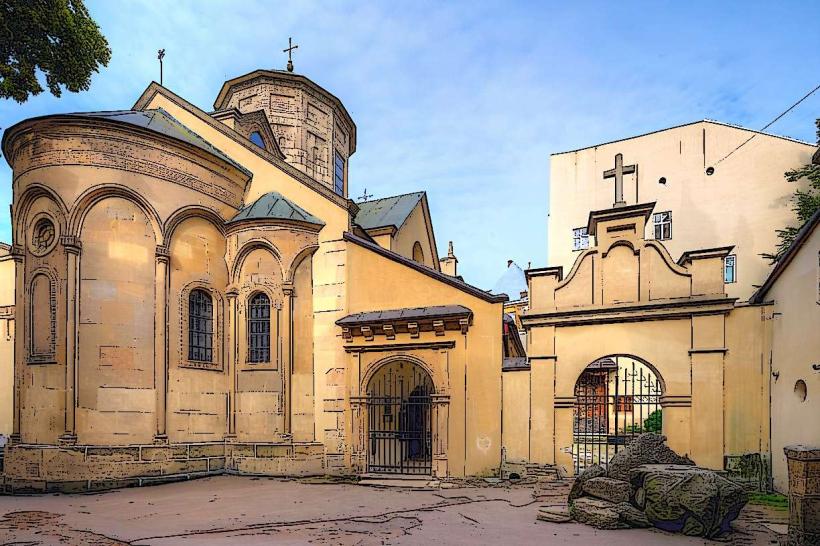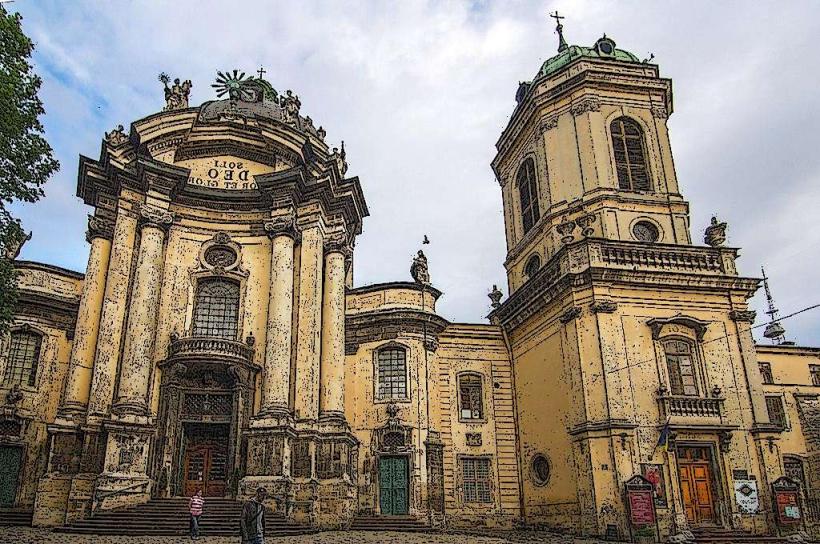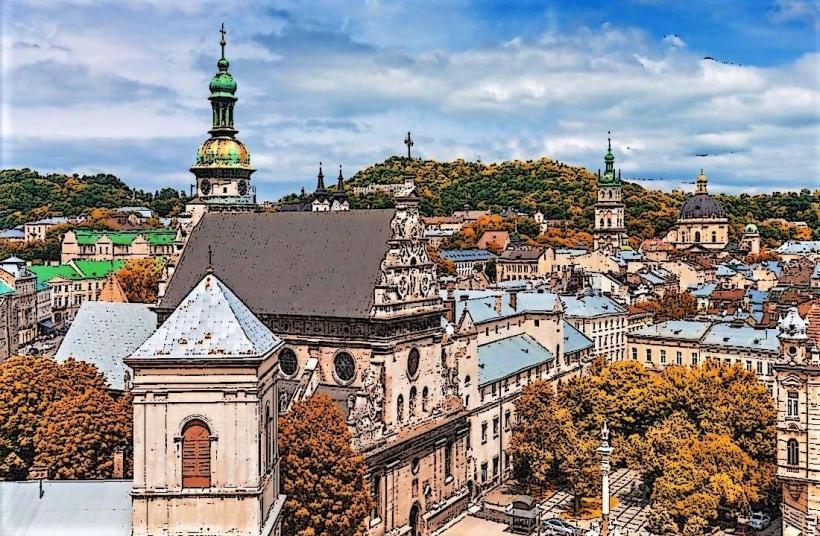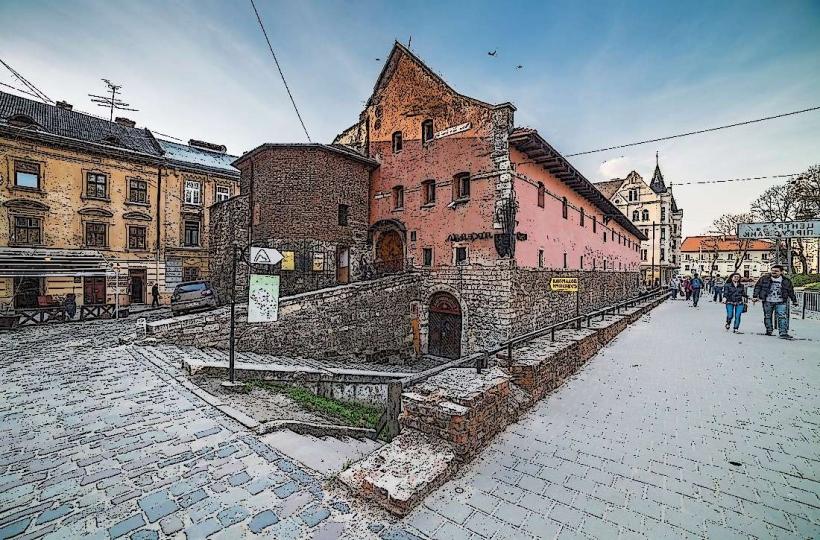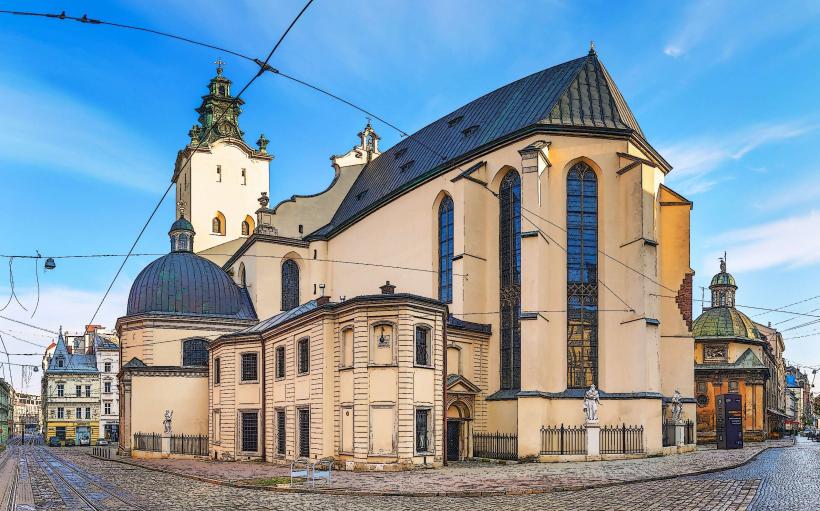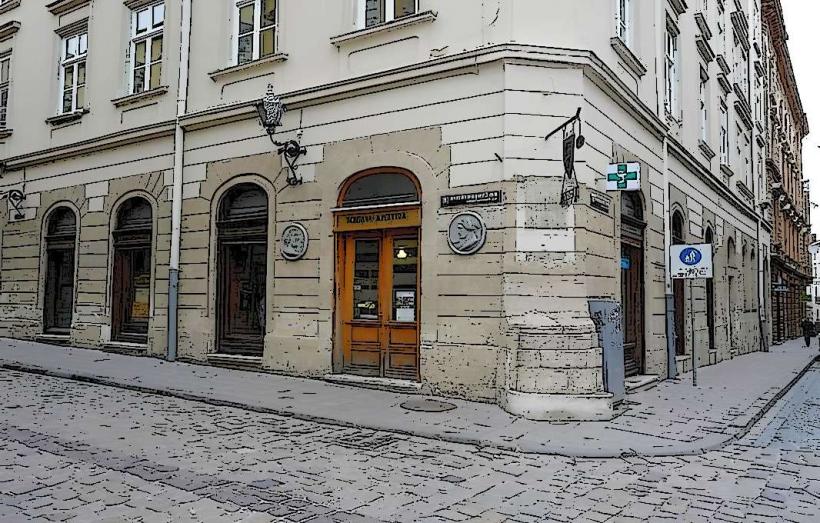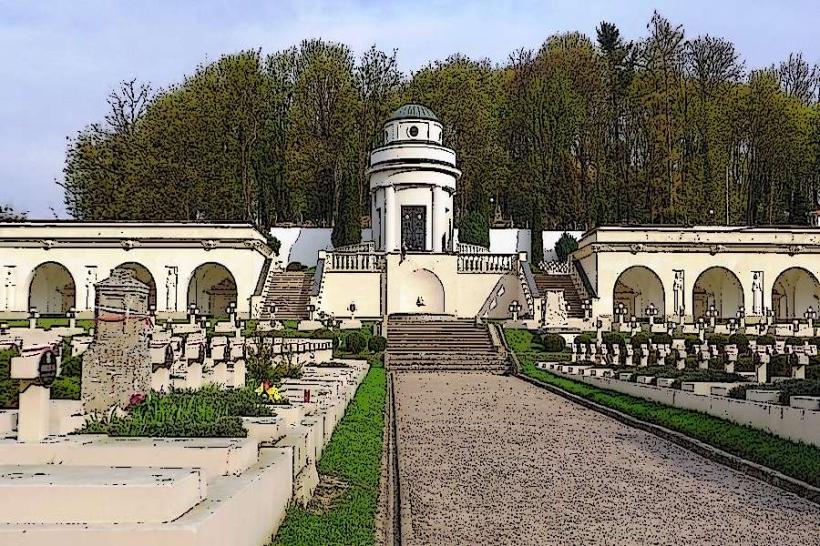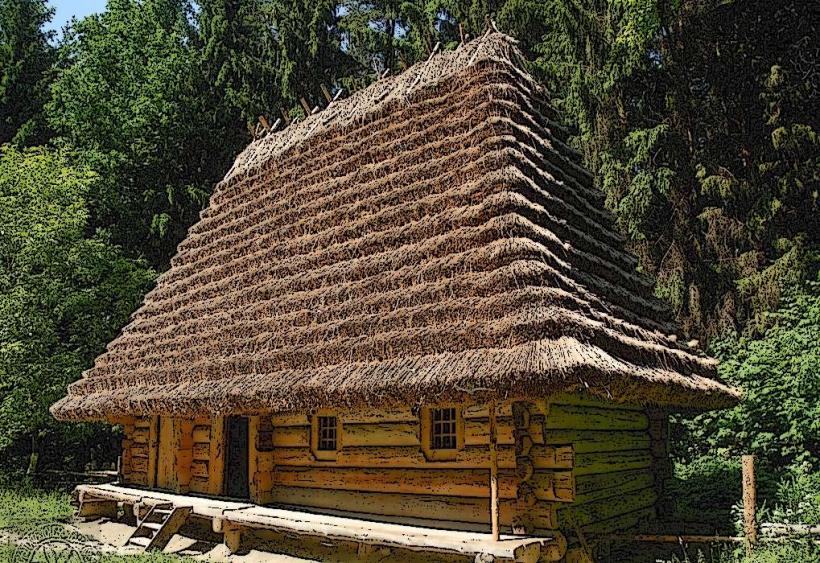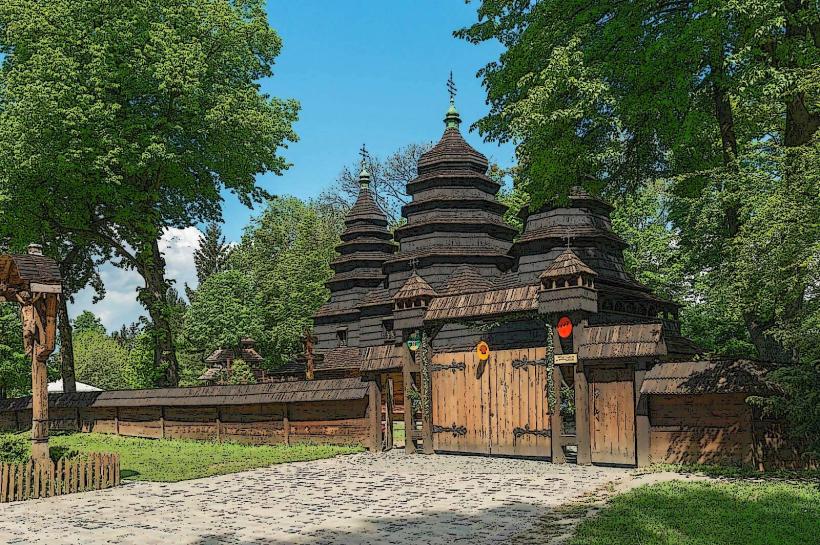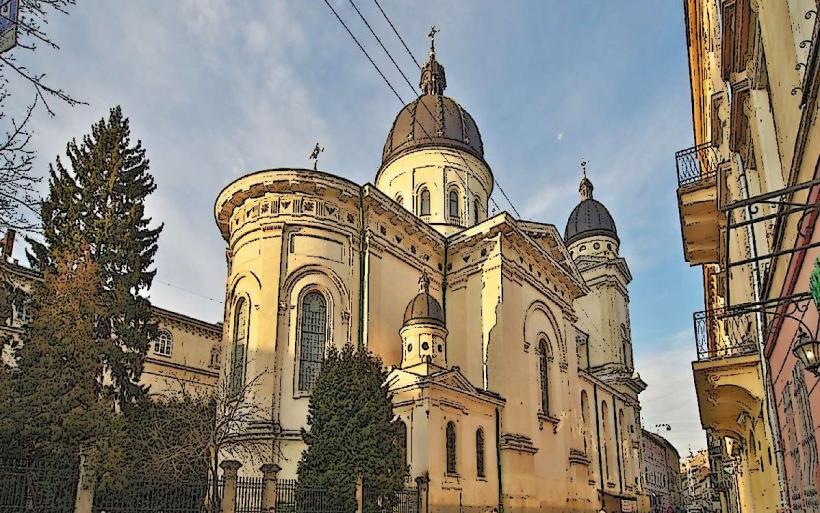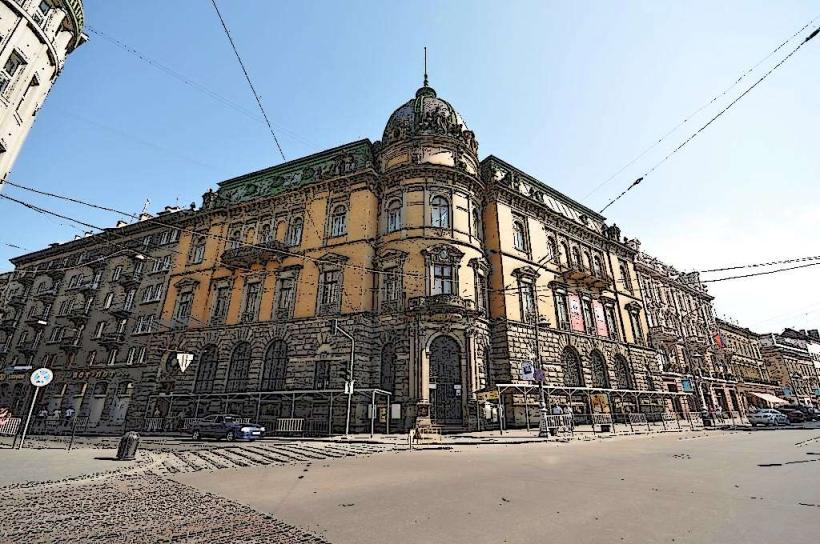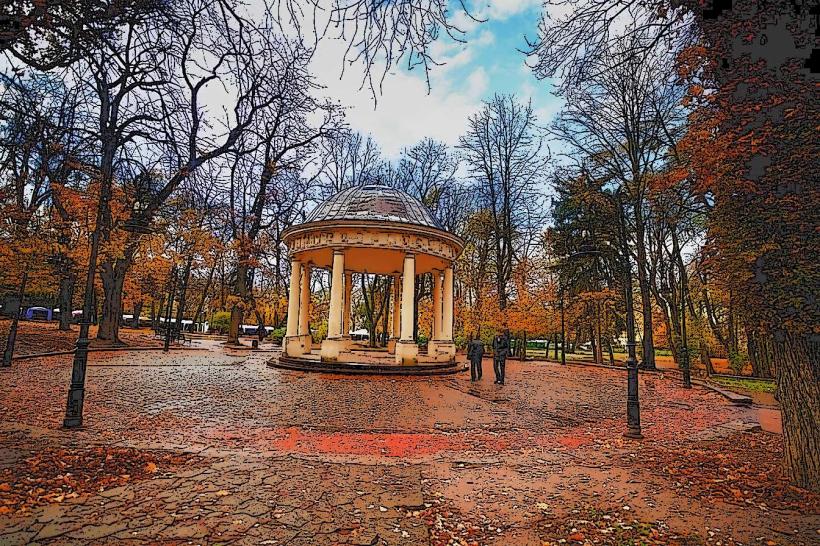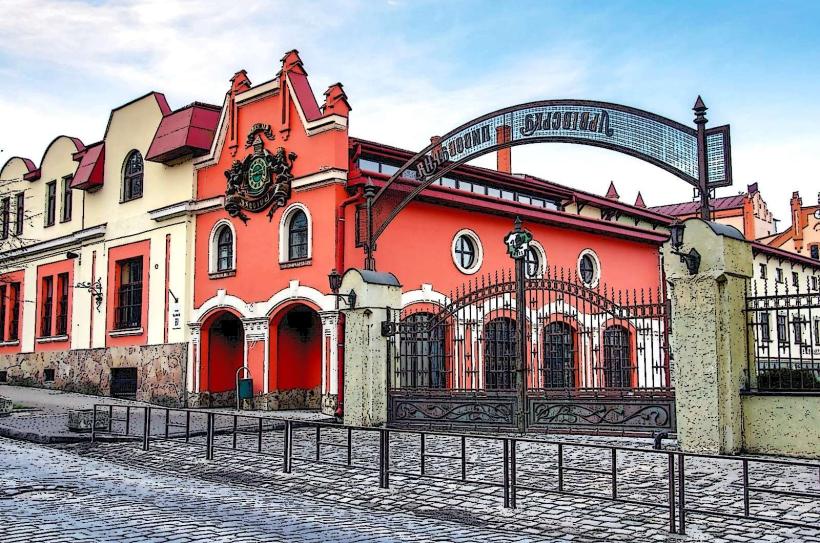Information
Landmark: Potocki PalaceCity: Lviv
Country: Ukraine
Continent: Europe
Potocki Palace, Lviv, Ukraine, Europe
Overview
As it turns out, The Potocki Palace, at 15 Copernicus Street in Lviv, Ukraine, rose between 1880 and 1890 at the request of Count Alfred Józef Potocki, a wealthy Austro-Hungarian nobleman whose taste for grandeur is still evident in its carved stone façade, likewise the Potocki Palace, designed chiefly by Parisian architect Louis Dauvergne with contributions from local talents Juliusz Cybulski and Ludwik Baldwin-Ramułt, stands as a striking display of French classicism touched by the elegance of Louis XVI style, its pale stone façade echoing the grandeur and refined taste of the late 19th century.The palace follows an H-shaped design, rising three full stories with an attic tucked under the roof, its symmetry lending a quiet, commanding presence, then outside, the façade bursts with stucco flourishes, slender Ionic columns, and delicate carvings that catch the light.Actually, A sweeping arched portico rises on sturdy columns, drawing visitors toward the rich glow of the interior, in addition the attic’s roof boasts dormer windows and intricate trim, all blending seamlessly with the home’s classical charm.The interior boasts lavishly adorned rooms, their velvet drapes and gleaming woodwork hosting grand receptions as easily as intimate gatherings, at the same time central Hall is the grand heart of the building, greeting visitors with gleaming marble floors, golden stucco curling along the walls, and woodwork carved in delicate patterns.Several beautifully decorated salons fill the space, each with its own style and color scheme, subsequently in the Green Hall, soft green silk covers the walls, gilded stucco catches the light, and chandeliers sparkle overhead, perhaps Concert Hall, often called the Red Hall, boasts walls draped in rich red silk and was built for music and lively gatherings, and ballroom (White Hall): The largest room, dressed in white and gold, with crystal chandeliers casting warm light across mirrored walls.Banquet Hall (Blue Hall): A grand dining room draped in deep blue silk, with intricate carvings catching the light, also inside, gilded stucco moldings catch the light, marble fireplaces anchor each room, silk wall coverings feel cool to the touch, polished wood floors gleam, and crystal chandeliers sparkle overhead-every detail a clear display of the Potocki family’s wealth and refinement.The Potocki Palace began as the lavish city home of the Potocki family, a dominant force in Galicia and the Austro-Hungarian Empire, where gilded halls once echoed with the murmur of high society, on top of that in 1919, a plane slammed into the palace, shattering windows and leaving walls cracked, and the damage forced extensive repairs and restoration, roughly In the Soviet era, the palace took on a practical role, serving as home to the Institute of Geology and Geochemistry; offices replaced grand halls, and its original purpose quietly faded, subsequently since the early 2000s, Potocki Palace has been part of the Lviv National Art Gallery, where visitors wander through rooms lined with European paintings from the 14th to 18th centuries.It breathed novel life into the palace, turning it into a vibrant cultural landmark where visitors linger by its sunlit courtyards, subsequently potocki Palace isn’t just an architectural masterpiece-it stands as a proud reminder of Lviv’s aristocratic past, echoing the elegance of candlelit halls and a deep, enduring cultural heritage, fairly Preserved in its original form, it lets visitors step into the refined world of 19th-century nobility, where polished oak floors and delicate portraits reveal the era’s artistic taste, simultaneously today, visitors can wander through the palace’s rotating art shows, enjoy lively cultural events, hear music drifting from evening concerts, and watch official ceremonies that draw locals and travelers alike.You can book the Mirror Hall, Blue Hall, or Red Hall for weddings, conferences, or receptions-picture candlelight flickering against polished floors, meanwhile guided tours let visitors wander through rooms lined with ornate ceilings, take in the elegant period décor, and uncover the history of the Potocki family and their palace.
Author: Tourist Landmarks
Date: 2025-10-02

